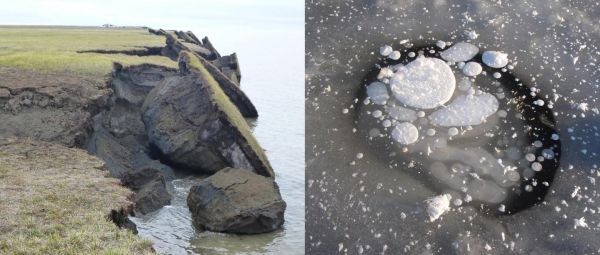Alaska’s land mass is equal to the size of one-fifth of the continental United States, yet stores about half of the country’s terrestrial – both upland and wetland – carbon stores and fluxes. The carbon is not only stored in vegetation and soil, but also in vital freshwater ecosystems even though lakes and ponds, rivers, streams, and springs only cover a small amount of landmass in Alaska.
Alarmingly, recent studies show that Alaska is warming more than twice as fast as the rest of the country. The fate of the large state’s plentiful carbon, and how carbon management policy is structured there, has implications on national, and even international, scales.
A collection of articles in the Ecological Society of America’s journal Ecological Applications provides a synthesis of the Alaska terrestrial and aquatic carbon cycle. “Taken as a whole, the set of papers in the invited feature provide a comprehensive view of a critical region, and one that could be a model for other regions within the U.S. and globally,” USGS researcher David McGuire writes in the feature’s introduction.
The warming climate in northern ecosystems such as Alaska’s can release carbon dioxide (CO2) and other gases into the atmosphere through many pathways, including but not limited to the thawing of methane-laden permafrost and increased carbon emissions from more frequent wildfires.
Read more at Ecological Society of America
Image: Left: Crumbling blocks of permafrost along the Beaufort Coast, Alaska (Photo courtesy of USGS). Right: Methane bubbles trapped in thermokarst lake ice. When ice-rich permafrost thaws, former tundra and forest turns into a thermokarst lake as the ground subsides. The carbon stored in the formerly frozen ground is consumed by the microbial community, which release methane gas. When lake ice forms in the winter, methane gas bubbles are trapped in the ice (Photo courtesy of Miriam Jones, USGS). (Credit: Miriam Jones and USGS)


